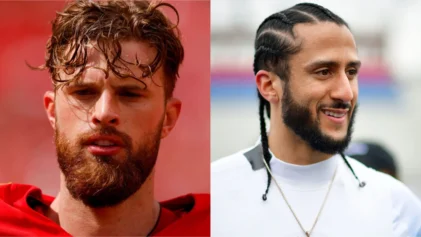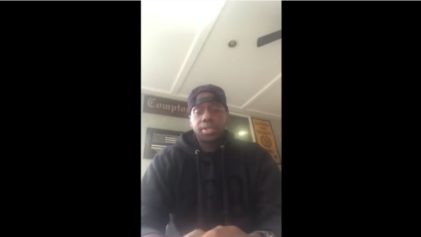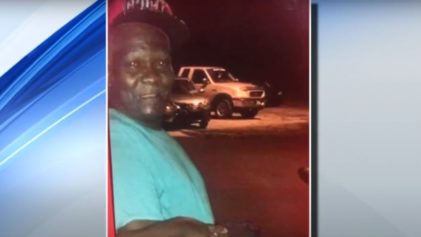
Published by the Journal of Epidemiology and Medical Health, the study follows years of life lost due to encounters with law enforcement in the United States, providing hard numbers from 2015 through 2016.
Written by Anthony Bui, Matthew Coates and Ellicott Matthay, the three researchers discovered that “There were 57,375 and 54,754 YLLs due to police violence in 2015 and
2016, respectively. People of color comprised 38.5% of the population, but 51.% of YLLs. YLLs were greatest among those aged 25–34 years, and the number of YLLs at younger ages was greater among people of color than whites.”
According to these conclusions, “The number of years of life lost due to police violence is substantial. YLLs highlight that police violence disproportionately impacts young people, and the young people affected are disproportionately people of color. Framing police violence as an important cause of deaths among young adults provides another valuable
lens to motivate prevention efforts.”
In short, the deaths of children like Tamir Rice — a 12-year-old playing with a BB gun in a park who was gunned down in November 2014 within seconds of Cleveland police arriving on the scene — proves that Black people simply aren’t given the same room for error or empathy as other races, particularly when dealing with police officers.
Crafted by authors from Harvard Medical School, UCLA School of Medicine and UC Berkeley, the group compiled data from The Guardian’s growing database on police shootings, examining the age of victims at the time of their death versus what their estimated life expectancy.
Blatant racism remains a hurdle, but it’s subconscious racial bias that perhaps does the most damage, causing those tasked with protecting (all) citizens to make snap decisions that unfortunately can end up in a loss of life — at least for minorities.
Chris Mooney of Mother Jones explained how bias can lead to violence by saying “Racially biased messages from the culture around you have shaped the very wiring of your brain. It is not that we are either prejudiced or unprejudiced, period. Rather, we are more and less
prejudiced, based on our upbringings and experiences but also on a variety of temporary or situational prompts.”
Still, police convictions are rare, and as CNN reported: “Between 2005 and April 2017, 80 officers had been arrested on murder or manslaughter charges for on-duty shootings. During that 12-year span, 35% were convicted, while the rest were pending or not convicted.”
For those actively following these figures none of this is news, with the Washington Post ongoing tracker standing at some 400 people killed by police through early May 2018.
With the majority of officers given little more than judicial slaps on the wrist, the effects of police brutality ripple further than the lives taken by it. Cameras have gone a long way in offering a glimpse into a world that minorities have been describing for years, but they’ve done little to change the minds of those that would rather pretend that systematic racism doesn’t exist. In the aftermath of shooting after shooting, once the news cycle moves on communities have largely been left to pick up the pieces and deal with the emotional turmoil on their own.
There’s also an economic impact that often goes unnoticed when discussing the effects of police violence. Deaths can have a catastrophic effect on the family dynamic, creating a financial void via unexpected funeral expenses and in some cases the loss of the breadwinner. When cops gun down a young person often the dead individual leaves behind small children who are left without a parent and the parental financial support. Such losses widen America’s growing income gap between whites and Black or Latino families struggling to stay afloat.
It’s a disparity that has prompted multiple studies, including The Road to Zero Wealth, which examined wealth accumulation across racial lines. Writing for Fortune, co-author Josh Hoxie explained “The divide between the wealth of a typical black family and a typical white family today is vast. A median black family has just $1,700 in wealth — total assets minus total debt. Thirty years ago, that same family had $6,800 in today’ dollars. Latino families at the median have similarly small assets, just $2,000, and also saw a decline over the past three decades.”
Already facing hurdles that include systematic oppression in the form of health care, housing, education and more; police brutality adds yet another layer of injustice, one that sharply reduces the earning power of families left behind while effectively ensuring that yet another minority will never have the opportunity to obtain their own version of the American dream.
Wash, rinse and repeat. The legacy of state violence in America lives on, etched in the faces of parents, family and friends as they stand before cameras pleading for answers and accountability in a system that, at times, offers little of either. Much like the widening income gap, these are issues that can’t be addressed with multi-million dollar settlements, protests or the “thoughts and prayers” handed out to grieving families following each new incident.
Tasked with defending the public and handling crime on a daily basis, the role of law enforcement is undoubtedly necessary in society, but it’s the “bad apples” — as well as those that say nothing about them — that have created an aura of distrust that covers minority communities and poverty-ridden areas across America.
As Rep. Keith Ellison noted for The Guardian, “The fatal encounter between Officer Wilson and Michael Brown on Canfield Drive in Ferguson, Missouri, didn’t take place in a vacuum. Freddie Gray wasn’t the first black man thrown in the back of a van in Sandtown. Eric Garner wasn’t selling loosie cigarettes for fun. Harsh police tactics in black communities and a history of high rates of unemployment and poverty go hand in hand.”


